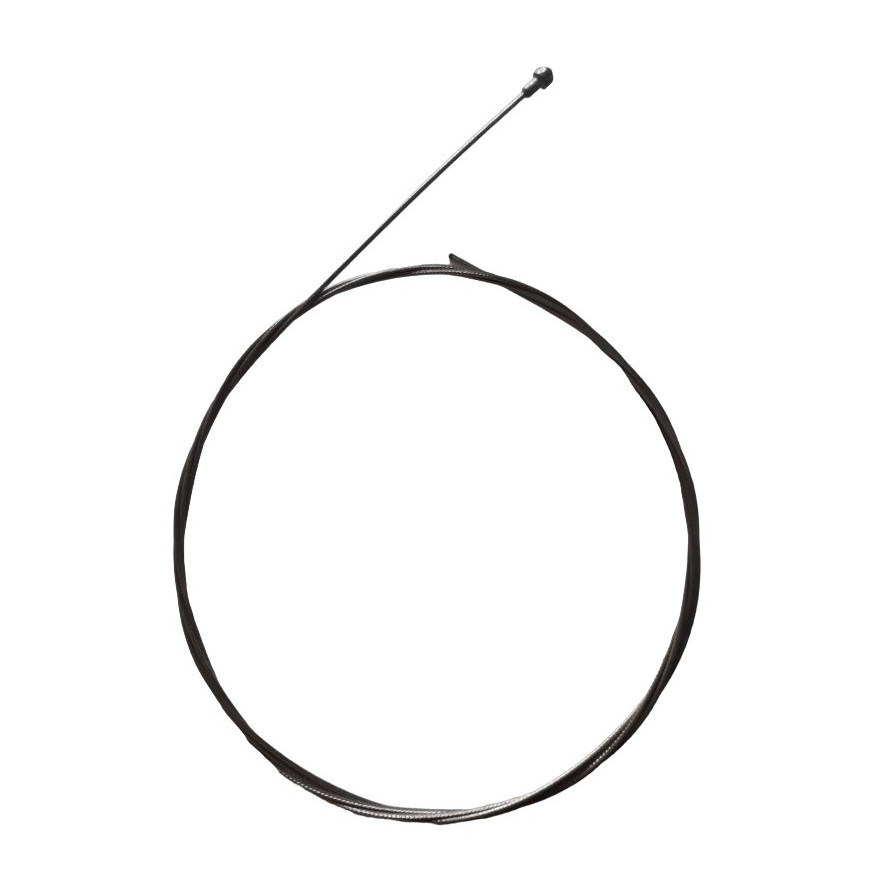 zoom_in
zoom_in
Brake cable for road bike 2000 mm
- cable
- 4 Items
- New

€1.18 VAT included €2.35
Everything You Need to Know About Bike Brake Cables
A bicycle's brake cables are one of the most essential components in keeping your bicycle safe and functioning properly. They help transmit the force from your brake lever to the brake calipers, causing your bike to slow down or stop. In this article, we'll dive into the world of bicycle brake cables, exploring their types, materials, maintenance, and how to choose the brake cables that are best for your bike.
Understanding Bike Brake Cables
Bicycle brake cables are mechanical components that connect brake levers to brake calipers. When you operate the brake levers, the tension in the cables increases, causing the brake shoes to rub on the rims or the pads on the rotors, slowing or stopping your bike. There are two main types of bicycle brake cables: center-pull brake cables and side-pull brake cables.
Main Types of Brake Cables
1. Center Pull Brake Cables:
These cables are mainly used on cantilever brakes and V-brakes. When you operate the brake lever, the cable is pulled directly toward the center of the caliper, causing the brake arms to contract against the rims.
2. Side Pull Brake Cables:
Side pull brake cables are commonly used with disc brakes and side caliper brakes. They pull the cable to the side to activate the braking mechanism.
Brake Cable Materials
Bicycle brake cables are generally made from two main materials:
1. Stainless Steel:
Stainless steel cables are durable, corrosion resistant and provide great braking force. They are suitable for most types of brakes and are commonly used.
2. Kevlar or Teflon cables:
These cables are coated with special materials to reduce friction and improve braking performance. They are lighter than stainless steel cables, but can wear out more quickly.
The Benefits of Bicycle Brake Cables
Bicycle brake cables are a common choice due to their many benefits. Here are some of the main benefits of using brake cables:
1. Affordable Cost
Brake cables are a cost-effective solution for your bike's braking system. They are affordable and easy to replace if they wear out.
2. Simple Installation and Maintenance
Installing and maintaining brake cables is relatively simple, meaning many riders can perform these tasks themselves without the need for a professional mechanic.
3. Versatility
Brake cables are suitable for a variety of brake types, including shoe brakes, disc brakes, cantilever brakes and others. They are widely used on different types of bicycles, from road bikes to mountain bikes to city bikes.
4. Light Weight
Compared to other brake systems, brake cables are lightweight, which can help reduce the overall weight of your bike.
5. Reliability
When properly maintained, brake cables are reliable and provide consistent stopping force. They are widely used in varied driving conditions.
How to Choose the Ideal Brake Cables
Choosing the ideal brake cables depends on several factors, including the type of brakes on your bike, your riding style, and your personal preferences. Here are a few steps to help you choose the brake cables that best suit your bike:
1. Determine the Type of Brakes
Identify the type of brakes your bike uses. Brake cables are specific to certain types of brakes, such as disc brakes, lateral caliper brakes, or cantilever brakes. Make sure you choose cables that are compatible with your brakes.
2. Choose the Material
Decide which material best suits your needs. Stainless steel cables are durable and versatile, while Kevlar or Teflon coated cables provide friction reduction for better braking performance.
3. Suitable Length
Make sure you choose brake cables of the appropriate length for your bike. Cables that are too short can make braking ineffective, while cables that are too long can become tangled or stuck.
4. Finishing
Brake cables are available in a variety of finishes, including smooth, spiral, or coiled. Choose a finish that matches your aesthetic preferences.
5. Consult a Professional
If you have any doubts about the choice of brake cables for your bicycle, do not hesitate to consult a bicycle mechanic or bicycle professional. They can help you determine which cables are best for your bike and riding style.
Brake Cable Maintenance
To keep your brake cables in good working order, follow these maintenance tips:
1. Inspect brake cables regularly for signs of wear, corrosion or damage. Replace damaged cables as soon as possible.
2. Lubricate the cables periodically to reduce friction and maintain proper operation.
3. Make sure the brake cables are properly tensioned to ensure effective braking. If the cables are too loose, braking may be ineffective.
4. If you modify your bike's brake system, make sure the new cables are compatible with your brakes and are installed correctly.
Conclusion
Bicycle brake cables are essential components to ensure safe and reliable braking. Choosing the right brake cables for your bike and riding style is crucial to your safety. Whether you prefer standard stainless steel cables or cables coated with special materials, be sure to maintain them properly to ensure optimal performance. With the right brake cables, you can enjoy your bike rides with confidence, knowing that your braking system is up to the task.
